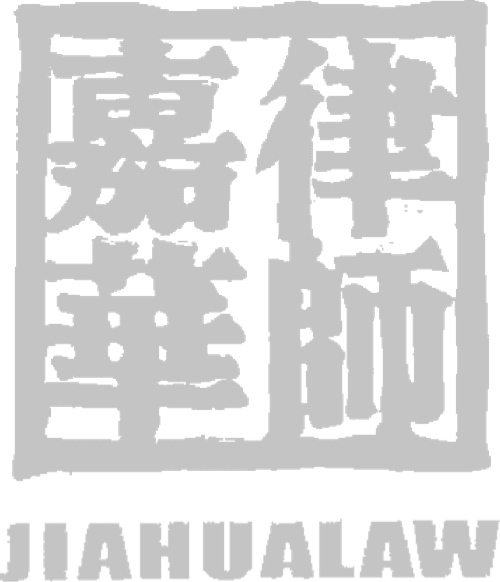
在探讨正题之前有必要做如下说明,以利于了解本文的特点:
在美国,作为律师同样需要做案例分析,但是与国内不同的是,案件分析是基于判例规则的抽象与对比。例如发生在美国的一个案件,一个人进入仓库进行盗窃,属于burglary in the second degree(二级盗窃罪),律师要做的是找案例去归纳出哪些是burglary in second degree (二级盗窃罪)的element(构成要件)。通过案例会发现A defendant is guilty of burglary in the second degree when he enters or remains in a structure without authority ,he has the intend to commit a felony or a theft, and the structure at issue satisfied the definition of a “building” under the statue(当被告未经许可进入或停留在建筑物内时有实施重罪或盗窃的意图,他就犯有二级盗窃罪,所涉建筑物符合法律下“建筑物”的定义)。这时,还要找到类似能解释案件中“仓库”的案例,也就是比对案例里找到的“building”( “建筑物”)的概念。如果能找到的只有“停车库”而不是“仓库”,有以下两种选择:要么继续找案例,找到类似能比对出的为止,要么类推或者找policy(立法政策)来证明观点。这跟我们国内法律检索的思路不同,我们的思路是不清楚的地方找法条,再不清楚的找司法解释。
介绍美国裁判思路的一个原因在于,读者会发现本文的很多分析都是基于案例。这也是笔者结合判例法的一种中文式解读。由于判例都有特殊性,这些案例在碰到类似案件可以被作为标准,但碰到不同案件还需要做判例法的比较与抽象工作。很可能引用判例中的裁判规则跟本文的标准不一样,那是因为本身有很多事实都不同,为了论证结论,法官又会创设新的标准以适应不断出现的事实,从而解决现实问题。


常见的虚假陈述以及未履行信息披露义务请求权基础的法条如下:
英文原文:
Ҥ 78j. Manipulative and deceptive devices.
It shall be unlawful for any person, directly or indirectly, by the use of any means or instrumentality of interstate commerce or of the mails, or of any facility of any national securities exchange—
(b) To use or employ, in connection with the purchase or sale of any security registered on a national securities exchange or any security not so registered, or any securities-based swap agreement[,] any manipulative or deceptive device or contrivance in contravention of such rules and regulations as the Commission may prescribe as necessary or appropriate in the public interest or for the protection of investors.”
以上引自:15 U.S.C.S. § 78j (LexisNexis, Lexis Advance through Public Law 116-108, approved January 24, 2020, with gaps of Public Law 116-92 and Public Law 116-94)
翻译过来大致意思是:为了公共利益和投资者保护的目的,任何人不得直接或者间接操纵已登记或者未登记的证券交易。
英文原文:
Ҥ 240.10b-5 Employment of manipulative and deceptive devices.
It shall be unlawful for any person, directly or indirectly, by the use of any means or instrumentality of interstate commerce, or of the mails or of any facility of any national securities exchange,
(a) To employ any device, scheme, or artifice to defraud,
(b) To make any untrue statement of a material fact or to omit to state a material fact necessary in order to make the statements made, in the light of the circumstances under which they were made, not misleading, or
(c) To engage in any act, practice, or course of business which operates or would operate as a fraud or deceit upon any person, in connection with the purchase or sale of any security.”
以上引自:17 C.F.R. § 240.10b-5 (Lexis Advance through the March 16, 2020 issue of the Federal Register with the exception of the amendment appearing at 85 FR 14794. Title 3 is current through March 6, 2020)
翻译过来大致意思是:任何人不得直接或者间接的参与或使用任何设备或计划去操作证券买卖或不实陈述等等。
以上两个法条的内容跟国内差不多,我们能从字面上明白大概意思,但哪些才是重要的构成要件呢?请看下文的分析。
通过判例,我们或许能对构成要件有所具体了解,以下会在构成要件部分进行详细阐述。这些判例包括:ATSI Communs., Inc. v. Shaar Fund, Ltd., 493 F.3d 87;Lentell v. Merrill Lynch & Co., 396 F.3d 161等等。
在判例中阐述的虚假陈述以及未履行信息披露义务构成要件如下:
(1)made misstatements or omissions of material fact(对重大事件进行不实陈述和省略)
(2)with scienter(存在明知或者故意)
(3)that the plaintiff's reliance was the proximate cause of its injury(原告信赖是导致损失的原因)
这些是一级构成要件,其他构成要件需要根据个案阐述,本文就不再赘述。

1.made misstatements or omissions of material fact
对重大事件进行不实陈述和省略
misstatements 即虚假陈述,构成要件是
(1) false(虚假)
(2) material(重大)
Omissions 即有披露义务而未尽披露义务,同样需要material(重大性质的)
所以这个构成要件的核心在于“重大事件”的标准:
(1)“there is a substantial likelihood that a reasonable person would consider [the allegedly misstated or omitted fact] important in deciding whether to buy or sell”the securities at issue. See Azrielli v. Cohen Law Offices, 21 F.3d 512, 518 (2d Cir. 1994).
即,被虚假陈述或者未披露的事实很大程度上会影响理性投资人买或卖该证券。或者:
(2)“When contingent or speculative future events are at issue, the materiality of those events depends on a balancing of both the indicated probability that the event will occur and the anticipated magnitude of the event in light of the totality of company activity.” See Castellano v. Young & Rubicam, Inc., 257 F.3d 171, 180 (2d Cir. 2001).
即,如果涉及偶发或者推测性的未实际发生的事件,事件重要性的标准在于衡量“事件发生的可能性”以及“根据公司总体情况而产生的预期影响的大小”。
以一个常见的案件为例:
某个公司的CEO在季度会议上说“我判断我们公司的增长会持续变缓慢,但是我们将会有能力提高增长”,“我坚信我们的增长率在未来会跟上”,标准投资人不能将以上言论作为对预期增长率的保障。如果把两句话分开,第二句话虽然是一个保证句,但也应该放在整个背景下来判断。
2.with scienter
存在明知或者故意 。 需要说明的是,这个明知或者故意 has no bright-line rules (没有明确规定的标准),需要通过事实比较得出。该一标准可以从以下两点分析来窥知一二:
(1)“by alleging facts to show that defendants had both motive and opportunity to commit fraud” ECA & Local 134 IBEW Joint Pension Trust of Chicago v. JP Morgan Chase Co., 553 F.3d 187, 198 (2d Cir. 2009)
即,结合被告虚假陈述或者未履行披露义务的动机和时机;
(2) “by alleging facts that constitute strong circumstantial evidence of conscious misbehavior or recklessness.” South Cherry Street, LLC v. Hennessee Group LLC, 573 F.3d 98, 108 (2d Cir. 2009)
即,有能证明故意实施错误行为的强有力证据。
这些强有力证据包括:(1) benefited in a concrete and personal way from the purported fraud; (2) engaged in deliberately illegal behavior; (3) knew facts or had access to information suggesting that their public statements were not accurate; or (4) failed to check the information they had a duty to monitor.
即,以具体和个人的方法从中受益;参与故意违法的行为;知道或者能够得知陈述是不精确的;或者有义务核查而没有核查信息。
在强有力证据证明标准下,还有另一个证明明知或者故意的可供参考的标准,该标准仅供参考。
“state with particularity facts giving rise to a strong inference” of the required state of mind.”
即,必须存在一个能证明与提供强有力推断明知或者故意的特定事实。
引自:15 U.S.C.S. § 78u-4 (LexisNexis, Lexis Advance through Public Law 116-108, approved January 24, 2020, with gaps of Public Law 116-92 and Public Law 116-94)
在 Inc. v. Makor Issues & Rights, Ltd.案件中笔者找到了"strong inference"的判例解释:“determine whether the plaintiff has alleged facts that give rise to the requisite "strong inference" of scienter, a court must consider plausible, nonculpable explanations for the defendant's conduct, as well as inferences favoring the plaintiff. The inference that the defendant acted with scienter need not be irrefutable”(这个标准在于法官或者陪审团要比较“对被告有利的解释”以及“对原告有利的解释”,以确定是否能得出一个“strong inference” 有力推断,而且没有要求这个解释必须是无法反驳的。)
3.that the plaintiff's reliance was the proximate cause of its injury
原告对被告行为的信赖是损失的原因
标准如下:
(1)“the existence of cause-in-fact on the ground that the market reacted negatively to a corrective disclosure of the fraud” See Carpenters Pension Tr. Fund of St. Louis v. Barclays PLC, 750 F.3d 227, 232-33 (2d Cir. 2014).
即,损失的原因在于市场对于欺诈行为的纠正性披露作出了消极反应。或者,
(2)“that the loss was foreseeable and caused by the materialization of the risk concealed by the fraudulent statement.” See Carpenters Pension Tr. Fund of St. Louis v. Barclays PLC, 750 F.3d 227, 232-33 (2d Cir. 2014).
即,损失可预见且由被欺诈陈述所隐藏的重大风险所导致。
举例说明:
一个美股上市公司的老总因为行贿被抓了,但是警察还没正式作出拘捕决定。为了稳定股价,该上市公司向外发布该老总安然无恙、与行贿没有关系的消息,过了一段时间后,警察还是以行贿拘捕了他。这种情况就是以上的第一种情形。
4.Exception 例外 :
safe harbor for forward-looking statements
预警陈述
这种陈述是否属于欺诈,需要考虑如下几点:
(1)“To avail themselves of safe harbor protection under the meaningful cautionary language prong, defendants must demonstrate that their cautionary language was not boilerplate and conveyed substantive information.” See Slayton v. Am. Exp. Co., 604 F.3d 758, 772 (2d Cir. 2010).
即,如果被告能够证明他的预警陈述不是格式文本且传达了实质性信息,就可以免责。
(2)“To determine whether cautionary language is meaningful, courts must first 'identify the allegedly undisclosed risk' and then 'read the allegedly fraudulent materials — including the cautionary language — to determine if a reasonable investor could have been misled into thinking that the risk that materialized and resulted in his loss did not actually exist.'” See In re Delcath Sys., Inc. Sec. Litig., 36 F. Supp. 3d 320, 333 (S.D.N.Y. 2014)
即,为了决定预警陈述是否具有意义,法官必须识别未被披露的风险以及了解欺诈的具体内容,以决定是否理性投资人会被误导而认为重大风险实际上不存在。
说明:
“Cautionary language that did not expressly warn of or did not directly relate to the risk that brought about plaintiffs' loss is insufficient.” See Gregory v. ProNAi Therapeutics Inc., 297 F. Supp. 3d 372, 398 (S.D.N.Y. 2018).
如果预警陈述没有明确的关于风险的警告或者没有直接指向风险,那么这些语言就与原告的损失无关。
举例来说:
某些投资人认为上市公司的如下陈述构成虚假陈述,公司说:“我们公司在未来将可能获得更高的收益”,投资人认为:“管理层应该能意识到公司不可能在未来获得更高的收益,因为公司的扩张支付了大量的利润”。根据safe harbor for forward-looking statements预警陈述标准分析:如果这个公司除了有以上陈述,在其他文件中也从宏观角度说“由于国际市场变动,我们的年收益会受到影响”,那么这种陈述就属于“格式文本”,因为这种陈述哪个公司都可以用,且根本没有传达任何实质性信息,也没有指明具体的风险,即没有指明该风险是针对上面的陈述。

以上系一些案件中关于美国上市公司虚假陈述或者未履行披露义务的简单介绍,希望这个文章提出的判例法方法论以及这些案例抽象出来的一些规则,能对我国中概股在美进行合规性审查以及应对集体诉讼有一些帮助。
“本文章版权属于原作者,本网站在取得原作者合法授权后转载,目的在于促进学术交流及传递更多信息,不代表本站观点及立场。”




